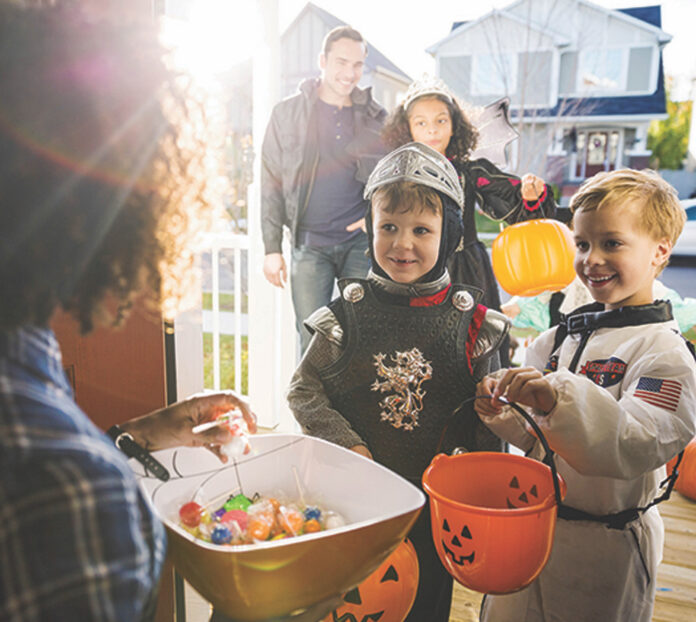Provided by MGS
Homeowners think nothing of having goblins, nurses, vampires, or astronauts showing up at their doors each October asking for candy. Any other time of the year and these visitors might be turned away. But Halloween is all about the magical and the macabre, and trick-or-treating is a major component of the festivities.
Kids and adults alike cry out “trick or treat” at each house they visit. Many utter this familiar phrase without a second thought and may have no idea how this familiar custom came to be.
During the Middle Ages, less fortunate individuals would go “souling,” which was a process of going door-to-door asking for food on November 1 in return for saying prayers for the deceased on All Souls Day on November 2. Many centuries later, the tradition of “guising” began in Scotland around the same time of year. People began wearing masks and costumes to disguise themselves and prevent evil spirits from harming them. Spirits were thought to cross over more readily around Halloween. The custom also was called “mumming” and was celebrated in nearby England and Ireland as well.
Costumes were eventually accompanied by hijinks. Mischief makers would sing a rhyme, do a card trick or tell a story in exchange for a treat. If that treat wasn’t presented, a “trick” could be played. For 19th century children, tricks included jamming hot cabbage into a keyhole to stink up a house or frightening passersby.
History.com indicates that when European immigrants arrived in America, they didn’t give up their annual mischief or requests for treats, and the custom spread throughout the early 20th century in the United States.
While the practice of begging for treats in some shape or form went by many names, Merriam-Webster reports that a newspaper in Saskatchewan, Canada first mentioned the words “treat” and “trick” together in print. A 1923 article indicated, “Hallowe’en passed off very quietly here. ‘Treats’ not ‘tricks’ were the order of the evening.” By 1927, more and more children were uttering “tricks or treats” to solicit candy from their neighbors.
Trick-or-treating gained steam throughout the 1950s, with endorsements by major candy companies. The custom also was showcased in popular comic strips.
Even though there are tricks to be made on Halloween, treats are the real draw of the day.














